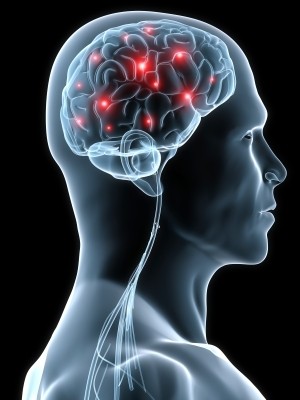Healthy brain wiring in adults depends on iron levels in adolescence, study

The study, led by UCLA neurology professor Paul Thompson and published online in the journal Proceedings of the National Academy of Sciences, could shed new light on the mechanisms by which iron affects cognition, brain development, and brain degeneration, claim the authors.
"You wouldn't think the iron in our diet would affect the brain so much in our teen years. But it turns out that it matters very much,” said Prof Thompson.
“It underscores the need for a balanced diet in the teenage years, when your brain's command center is still actively maturing.”
Transferrin levels connected to brain structure
It is well-known that too little iron can result in cognitive problems, while too much can promote neurodegenerative diseases (abnormally high iron concentrations have been found in the brains of patients with Alzheimer's, Parkinson's and Huntington diseases).
Thus understanding how the body regulates iron transport to the brain is crucial, said the study authors, who measured levels of transferrin, a protein that transports iron throughout the body and brain, in adolescents.
They discovered that transferrin levels were related to detectable differences in the brain's macro- and micro-structure when the adolescents reached young adulthood.
They also identified a common set of genes that influences both transferrin levels and brain structure.
Healthy brain wiring in adults linked to iron levels in teenage years
"We found that healthy brain wiring in adults depended on having good iron levels in your teenage years," said Thompson. "This connection was a lot stronger than we expected, especially as we were looking at people who were young and healthy. None of them would be considered iron-deficient.
"We also found a connection with a gene that explains why this is so. The gene itself seems to affect brain wiring, which was a big surprise.”
Methodology
Thompson's team collected brain MRI scans on 615 healthy young-adult twins and siblings with an average age of 23. Of these, 574 were also given a ‘diffusion scan’, which maps the brain's myelin connections and their strength, or integrity.
Myelin is the fatty sheath that coats the brain's nerve axons, allowing for efficient conduction of nerve impulses, and iron plays a key role in myelin production.
Blood samples of the subjects taken 8-12 years previously were then tested for transferrin levels in order to determine whether iron availability in adolescence impacted the organization of the brain later in life.
By averaging the subjects' transferrin levels, which had been assessed repeatedly — at 12, 14 and 16 years of age — the researchers estimated iron availability to the brain during adolescence.
Elevated serum transferrin levels in adolescence linked to changes in parts of brain vulnerable to degeneration
The team discovered that subjects with elevated transferrin levels — a common sign of an iron-deficient diet — in adolescence had structural changes in brain regions vulnerable to neurodegeneration. Meanwhile, further analyses of twins in the study revealed that a common set of genes influences both transferrin levels and brain structure.
One of the genetic links — a specific polymorphism in a gene called HFE known to influence blood transferrin levels — was associated with reduced brain-fiber integrity, although subjects carrying this gene variant did not yet show any symptoms of disease or cognitive impairment.
"So this is one of the deep secrets of the brain," Thompson said. "Poor iron levels in childhood erode your brain reserves which you need later in life to protect against aging and Alzheimer's.
"This is remarkable, as we were not studying iron deficient people, just around 600 normal healthy people. It underscores the need for a balanced diet in the teenage years, when your brain's command center is still actively maturing. "
The research was supported by the National Institute of Child Health and Human Development; Australia's National Health and Medical Research Council; the Achievement Rewards for College Scientists Foundation; the National Institute of Mental Health; and the Australian Research Council Future Fellowship.
Source: Proceedings of the National Academy of Sciences, published online before print January 9, 2012, doi: 10.1073/pnas.1105543109
‘Brain structure in healthy adults is related to serum transferrin and the H63D polymorphism in the HFE gene.’
Authors: Neda Jahanshad, Omid Kohannim, Derrek P. Hibara, Jason L. Steina, Katie L. McMahon, Greig I. de Zubicaray, Sarah E. Medland, Grant W. Montgomery, John B. Whitfield, Nick G. Martin, Margie J. Wright, Arthur W. Toga, and Paul M. Thompson.
















